Understanding FDA Food Labeling: A Guide for Food Manufacturers
This comprehensive guide provides the most important FDA guidelines for all aspects of the required nutritional information, including:

Nutrition Facts Panel

Ingredient List

Allergen Statements

Nutrient Content Claims
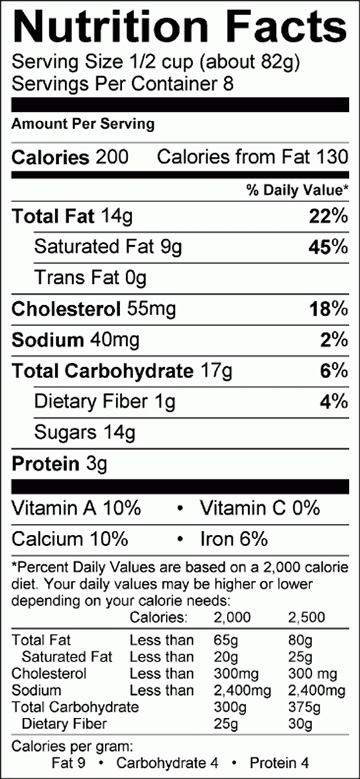
NUTRITION FACTS PANEL
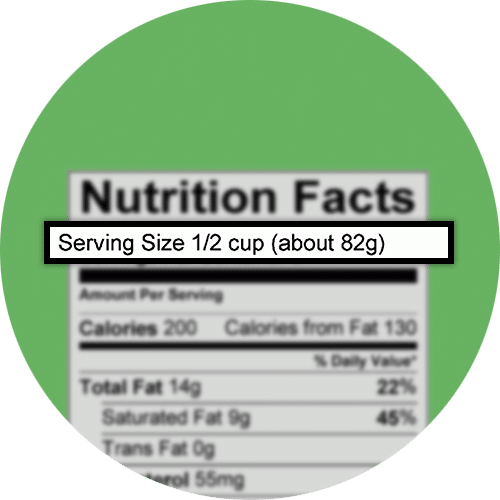
Serving Size
Serving size is the quantity of the product that is to be consumed at once. It is defined in familiar units (cups or pieces) that people can visualize or measure, followed by its weight in grams. The FDA sets general guidelines for serving size in the form of Reference Amounts Customarily Consumed (RACCs) for persons 4 and older.
Example: The RACC establishes that the reference amount for one serving of cereal is 60 grams.
To determine serving size, find the RACC for your type of product in the RACC guide and weigh out your product to that amount. Next, measure it in cups or pieces in order to find the serving size in familiar units. Both of these values will be used on your label.
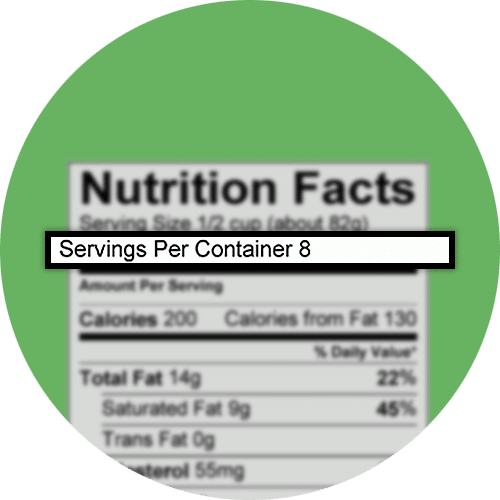
Servings Per Container
To determine servings per container, simply divide the total weight of your product by your serving size.
Servings per container should be rounded in the following way:
- Between 2 and 5: Round to the nearest half serving (i.e., 2.35 servings becomes 2.5)
- 5 and over: Round to the nearest serving (i.e., 6.5 servings becomes 7)
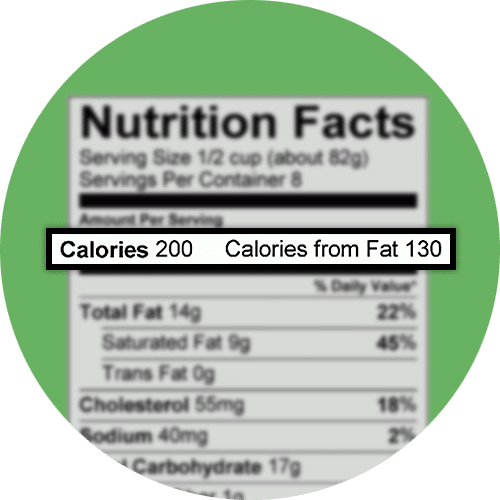
Calories
Calories per portion can be determined with online nutritional analysis software by simply entering your product recipe and serving size. Total calories and calories from fat are both required.
Calories per serving should be rounded in the following ways:
- Under 50 calories: Round up or down to the nearest 5 increment (i.e., 36 calories becomes 35)
- Over 50 calories: Round up or down to the nearest 10 increment (i.e., 88 calories becomes 90)
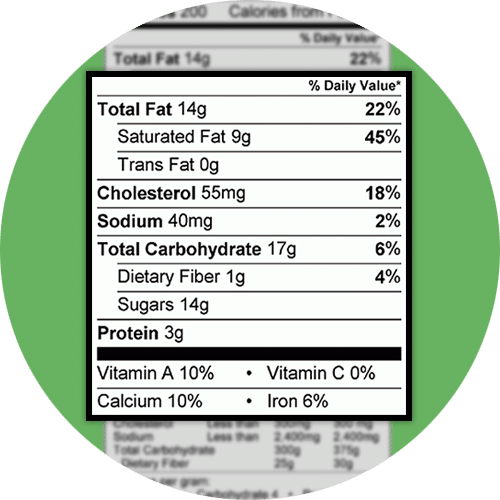
NUTRITIONAL VALUES (amount per serving)
- Total fat
- Saturated fat
- Trans fat
- Cholesterol
- Sodium
- Total carbohydrate
- Dietary Fiber
- Sugars
- Protein
- Vitamin A
- Vitamin C
- Calcium
- Iron
The quickest and easiest way to obtain these values is by using an FDA-compliant online nutritional analysis software.This way, you just need to enter your recipe, select your serving size, and the nutritional values will be generated for you.
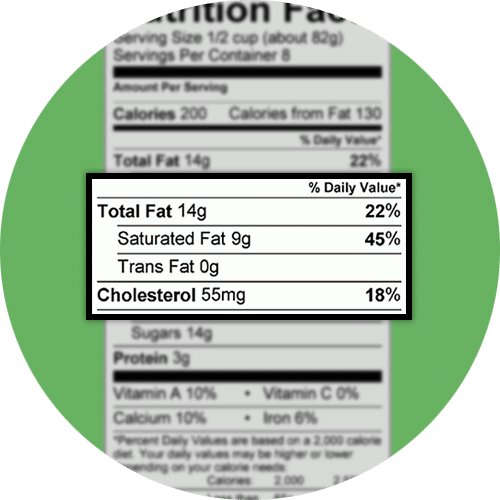
Fats (Total fat, saturated fat, trans fat, cholesterol)
Fats are currently receiving a lot of attention from the FDA. Based on new medical research, the evolving narrative is that not all fats are bad for our health. In the coming years, we can expect to see a shift in the daily values recommended by the FDA.
Total fat, Saturated Fat, and Trans Fat should be rounded in the following way:
- Under 0.5 grams: Round to 0 grams
- 0.5-5 grams: Round to the nearest 0.5 gram (i.e., 1.22 grams becomes 1.5)
- 5 grams and above: Round to the nearest gram (i.e., 1.45 grams becomes 1 gram)
*Note: Cholesterol should be rounded in the same way, only the unit will be in milligrams.
If your product does not contain trans fat, rather than declaring “0 grams of trans fat,” include the following statement: “Not a significant source of trans fat.” This should appear at the bottom of the nutrition facts panel. Also, note that the FDA advises not to provide a % Daily Value for trans fat.
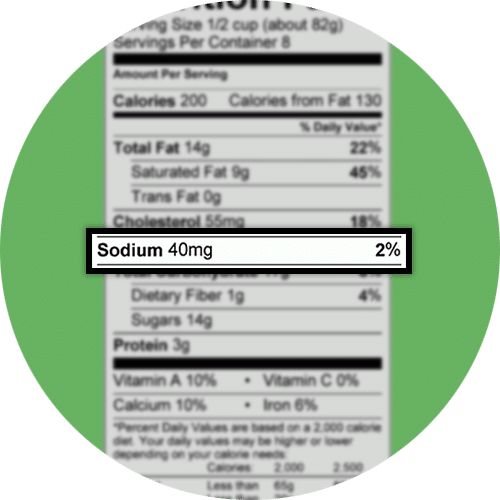
Sodium
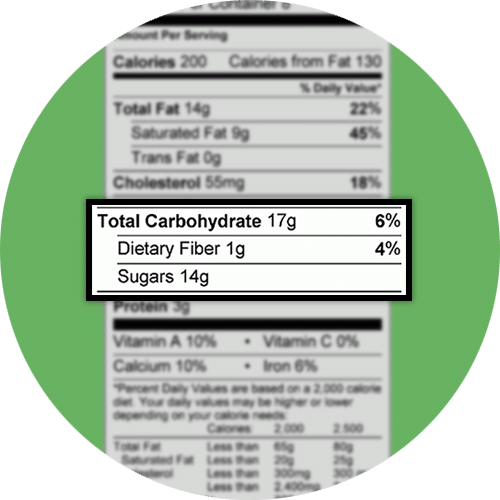
Total Carbohydrate, dietary fiber, sugars
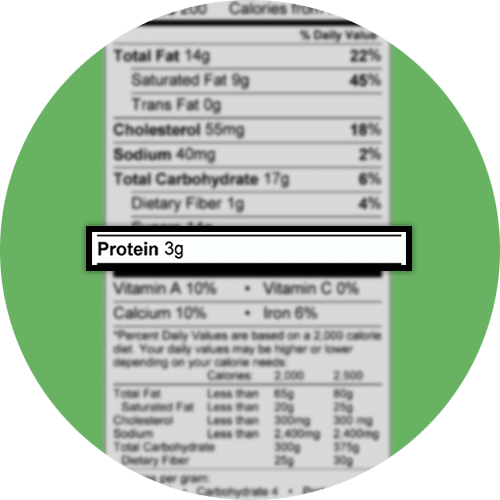
Protein
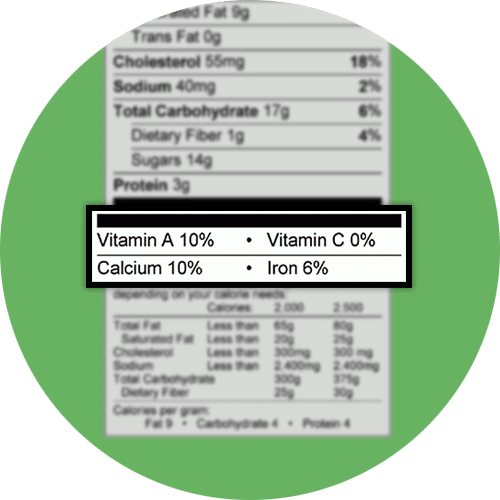
Vitamin A, Vitamin C, Calcium, and Iron
You may include additional vitamin and mineral information, such as Vitamin D or folate if desired. You must include all added nutrient information here as well (i.e., if your product is enriched with vitamins or minerals).

Footnote
The footnote is the section below the nutrient information that gives context to the product’s detailed nutrient information. The full footnote details the FDA recommended daily values for specific nutrients and is required if the product packaging uses more than 40 square inches for labeling.
The footnote must include:
- The following statement: “Percent Daily Values are based on a 2,000 calorie diet. Your daily values may be higher or
- lower depending on your calorie needs.”
The following table of daily values: [image of this table]
If the product packaging has less than 40 square inches for labeling, the following footnote statement is all that is required:
- “Percent Daily Values are based on a 2,000 calorie diet.”
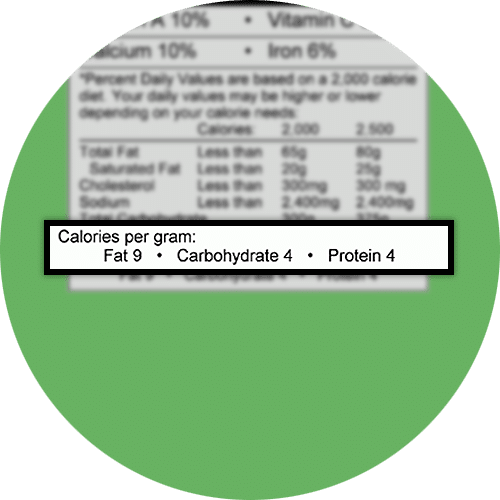
Caloric Conversion Information
Download our free Recipe Entry & Nutrition Labeling Guide today!
Watch A Demo
INGREDIENT LIST
- Ingredients: Avocados, lime juice, cilantro, salt
The ingredient list must be prominently displayed on the packaging, with a font not less than 1/16 inch in height.
If a food features an ingredient that contains other ingredients (sub-ingredients), those should be listed in parentheses following the primary ingredient. For example, if your product contains chocolate chips, they would be listed like this:
- …chocolate chips (cocoa, cocoa butter, sugar)
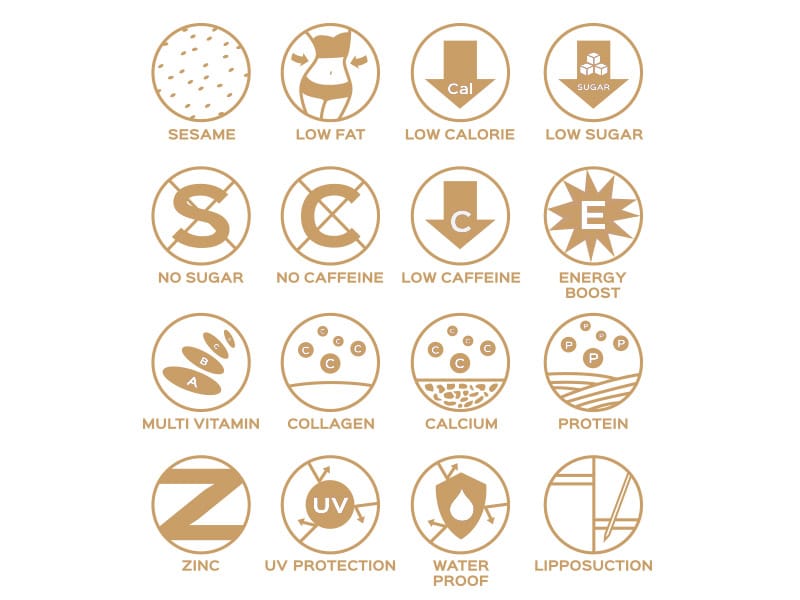
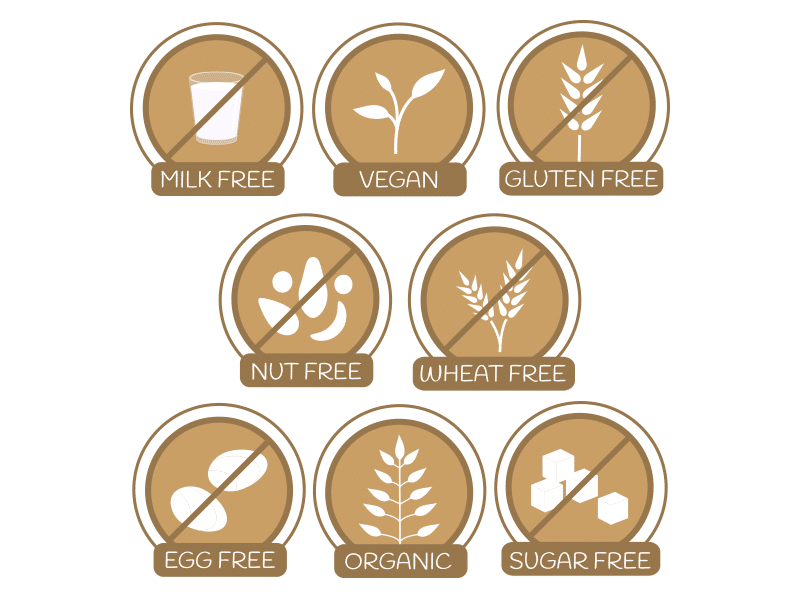
ALLERGEN WARNING
Allergen warnings alert consumers of the presence of one or more of the top eight allergens. These allergens account for 90% of all food allergies and are as follows:
- Milk
- Eggs
- Fish
- Crustacean shellfish (ie. crab, lobster, shrimp)
- Tree nuts
- Wheat
- Soy beans
- Peanuts
If a product contains any of these allergens, it must include a “contains” statement on the package (i.e., “Contains soy”), typically located after the ingredient list. This statement must use the same font size and type as the ingredient list.
NUTRIENT CONTENT CLAIMS (NCCs)
Nutrient content claims are the phrases on food product packaging that draw the consumer’s attention to a particular nutritional feature. They are not mandatory, though adding them to your product label may have a positive impact on sales.
The most popular NCCs are:
- Low fat
- Low calorie
- Reduced Sodium
In order to use an NCC on your product, you must make sure it qualifies for the specific claim you use. Each NCC has different requirements, so be sure to check the FDA’s NCC guidelines.
Food labels can be quite complex, particularly for those just starting out in the food manufacturing industry. It is, however, critical that you adhere to the FDA’s guidelines when it comes to labeling your product. Failure to comply could result in your product being pulled from store shelves or even legal action. Since FDA guidelines are subject to change, it is important to stay abreast of updates to labeling guidelines and be informed about FDA regulations so you can keep your labels current. While the FDA does not approve labels before products go to market, as a food manufacturer you have a responsibility to provide consumers with standardized, truthful information. Only then can you grow a loyal customer base and achieve success with your food product.
